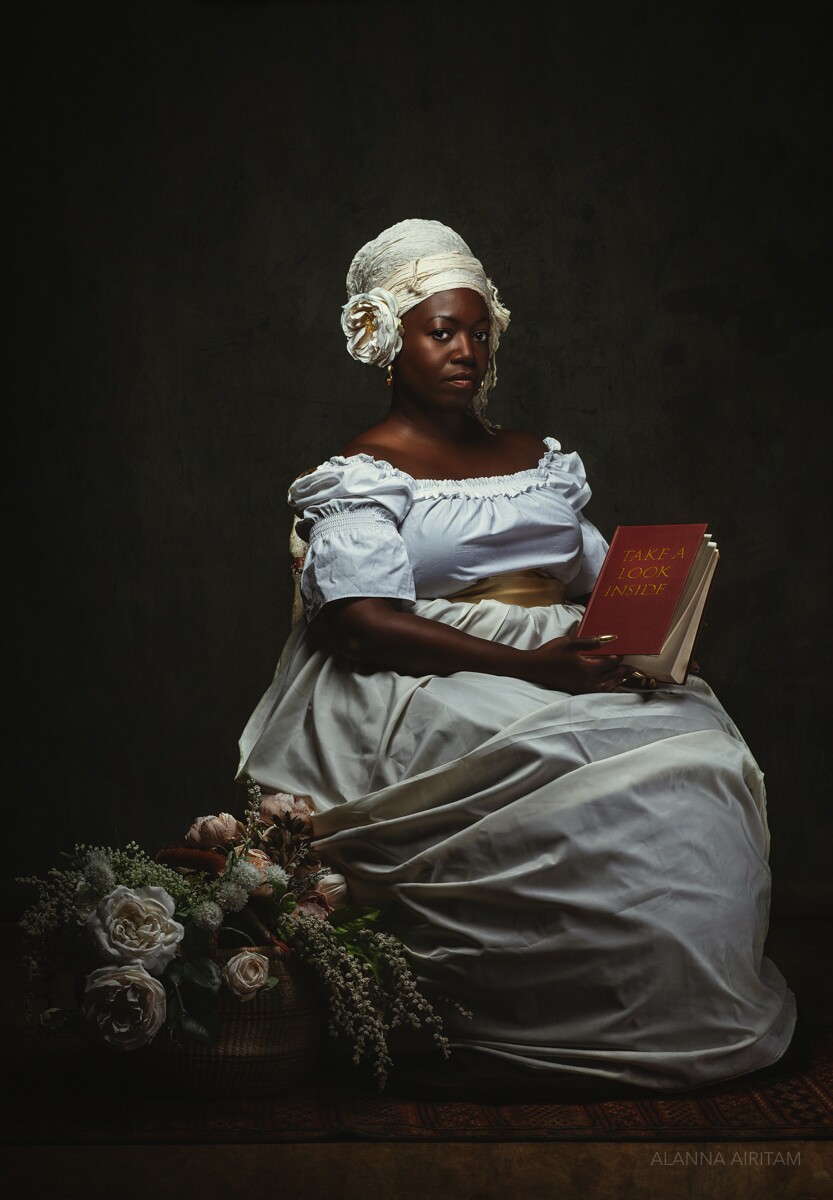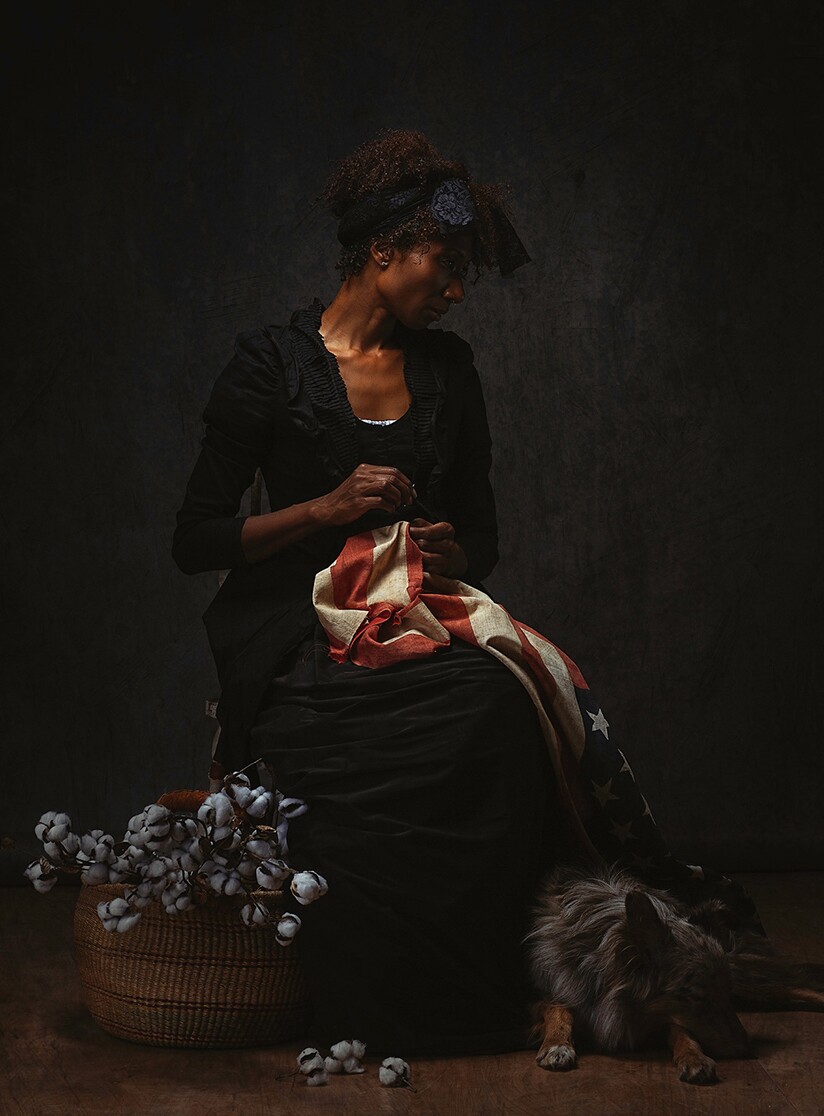As photographer Alanna Airitam readied her works to deliver to the Athenaeum Art Center in Logan Heights for a new exhibition, she described the origin process of her portraiture. "It needed to be not too heady. It needed to be something that was easily identifiable as art."
Airitam draws on the old Dutch masters — their skillful use of light, the regal poses that seem to not just exude art but define it. In some ways making a broad statement for representation and in other ways reclaiming what counts as art, her portraiture and still life photography pulls from centuries of work.
One of Airitam's most popular series, "The Golden Age," is her opus of representation. It forces us to consider who gets to decide what counts as art and who deserves decadence, but she isn't just trying to pose questions, she's showing us the answers — black bodies dressed and decorated in a manner that instantly, fully evokes fine art. Airitam wants younger generations to look at these works and recognize themselves, but also recognize the works as quintessentially art.
Her "Crossroads" series features figures looking away from the camera. Again, masterful lighting and untold narratives merge with sharp clarity. "I can see how people might take it as an act of defiance," Airitam said about the unconventional pose. "It kind of is, but for me there's a lot of hope in that. A looking away, a looking towards something else because we've been given a system that's not working for us."
While much of her photography plays with light and objects, it's her portraiture that most captures one of her fervent hopes: That her characters and audiences can feel their own power, stories and worth. "We are under a lot of pressure to be something that we're not, most of the time in our lives, and we're never going to get to that realization of self until we stop denying who we are."
Her newest exhibition, "How to Make A Country" builds on these ideas in her prior work. Including a self-portrait of Airitam stitching an American flag with a basket of fresh cotton at her side, the series highlights the stories that weren't told. "I was thinking about the people who make up this country, and how this country has become so economically prosperous and huge, and what it took in order to have a country like what we have," she said.

Her work is as rich with symbols and objects as it is with light and characters. Some of the symbolism and more speculative, surreal elements in her photography are indisputable — a country made of fresh-picked cotton at the hands of a black woman — but others are quieter and somewhat more insidious. Leafy, bubble-gum-pink peonies against a stark background or fingers clutching a raw beef heart.

Airitam's merger of photography and the old masters goes beyond her subjects, too. She felt dissatisfied with the first round of prints from her "Golden Age" series — the delicacy and vulnerability of a photographic print, the distance of the glaring museum-grade glass between her work and her beholder all seemed to obscure the piece's original power. "I wanted to regain that immediacy, being in front of the work, and I really liked it when it was unframed," she said.
She dug around to find a creative solution, and it's not surprising that it — like the inspiration she found in the old masters — is painterly. For her new exhibition, she's coated a few of her works with a protective varnish applied with brush strokes that eliminates the need for glass. Several more have thicker layers of resin that are then polished.
It's a time-intensive process, but Airitam appreciates both the product and the act. "I really like that I touched each one," she said. "I've been able to put my hands on each one, and each one turns out just a little bit different than the last one. They're all special."
Airitam, who is one of four nominees for this year's San Diego Art Prize, opens her newest exhibition, "How to Make A Country," this Saturday at the Athenaeum Art Center in the Bread & Salt complex in Logan Heights.






